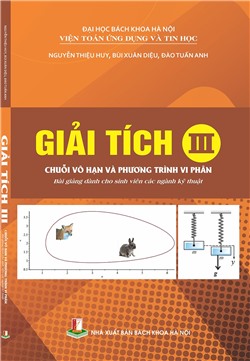Cẩm nang thi Đánh giá Tư duy
1249 lượt mua
Hotline Bán hàng:
0985694099Hotline :
024 38684569Năm xuất bản sách giấy: | 2011 | Năm xuất bản sách điện tử: | |
Khổ sách: | 16 x 24 | Số trang: | 288 |
Quốc gia: | Ngôn ngữ: | en | |
Mã ISBN: | Mã ISBN Điện tử: | ||
Loại sách: | Sách giấy | Nhà xuất bản: | Nhà Xuất Bản Bách Khoa Hà Nội |
For understanding and designing new devices with newly working principles it is necessary to have a good background on the “traditional” devices. Many Vietnamese universities and colleges are now expanding education programs with intensive study on this topic. Unfortunately, there are some difficulties for numerous Vietnamese students to approach to a systematic literature for explanation physical phenomena processing in semiconductor devices. This textbook is an effort to present a basic knowledge about physics of solid state electronic devices for graduate students and undergraduate students with special education programs. It may be useful for lectures and engineers working in this field.
This textbook is consisted from ten chapters. Chapter 1 is a very brief overview of semiconductor material properties. Chapter 2 recalls some fundamental points of quantum mechanics necessarily for description of physical processes in solid state materials and devices. Chapters 3 represents the main features of energy band theory and the band structure for the most widely used semiconductors Si and GaAs. Chapter 4 gives the basic knowledge on the carrier statistics in equilibrium, while chapter 5 provides information about carrier transport phenomena. Chapter 6 is a detail description of Shockley’s theory of p–n junction and relative effects. A short chapter 7 has information about the structure and electron transport over the potential barrier in metal–semiconductor junction. Chapter 9 is a description with other kind of objects, where metal–insulator–semiconductor – and its particular case, metal–oxide– semiconductor – structures are under consideration. Chapter 8 and 10 are devoted to physics of bipolar and metal–oxide–semiconductor field–effect transistors, respectively.

Cẩm nang thi Đánh giá Tư duy
1249 lượt mua

Thiết kế IC tương tự
276 lượt mua

99 Bài tập Học thuyết giá trị thặng dư
219 lượt mua

Hóa học cấu tạo chất
124 lượt mua

Cẩm nang thi Đánh giá Tư duy
11436 lượt xem

Giải tích I
4862 lượt xem

Giải tích III
3280 lượt xem

Thiết kế IC tương tự
3138 lượt xem

99 Bài tập Học thuyết giá trị thặng dư
2599 lượt xem
Bình luận